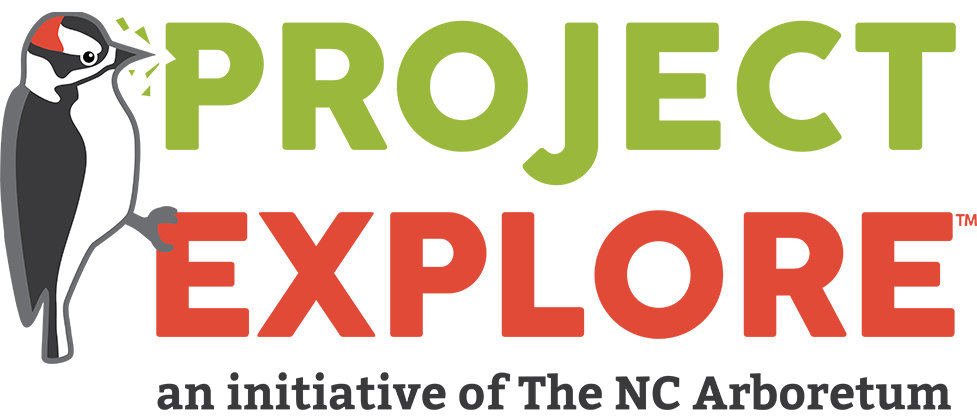Submitted By:
Mike Bartlett and Yetta Williams
Overview
Students will explore bird beak adaptations, through a hands on science experiment.
Grade Levels
4
Curriculum Correlation
4.L.1, 4.L.1.4
Duration
1 hour to 1 hour 15 minutes
Location
Classroom, Science Lab
Materials
- 100 pennies
- 100 skittles
- 100 gummy worms (no sugar-too messy)
- 100 balloons (not blown up)
- 30 plastic spoons
- 30 spoons
- 30 forks
- 30 toothpicks
- 30 chopsticks
- 30 plastic cups
- 30 paper plates
- Book: “In a Small, Small Pond” by Denise Fleming
- Video: “In a Small, Small Pond” by Denise Fleming: https://www.youtube.com/watch?v=nUiTWFjgF7g
- 11 Bird profiles, all different
- Crayons and markers
 Learning Targets
Learning Targets
Students will understand:
- Adaptations are vast and help animals survive.
- How to record the results of an experiment.
- How to evaluate research information and interpret it visually.
Students will know:
- How animals use adaptations to live in their ecosystems.
- That there is variation among individuals of one kind within a population. Students know that sometimes this variation results in individuals having an advantage in surviving and reproducing.
- Survival advantage is not something that is acquired by an organism through choice; rather it is the result of characteristics that the organism already possesses.
 Procedure
Procedure
Engaging, Relevant Introduction Activity: 20 minutes, at carpet
- Read story “In the Small, Small Pond” by Denise Fleming at the carpet, or show the video: https://www.youtube.com/watch?v=QRgds5x53ZI
- Discuss the adaptations that were read about in the book. Prompt them if necessary (frogs, geese, insects, turtles, herons, fish, swallows, etc.)
- If no one mentions birds after a few minutes, bring up birds and ask how they adapt.
- Once someone mentions bird’s beaks have the students go back to their seats.
- As they return, tell them to get a cup of pre distributed supplies and paper plate off the science table.
Lesson: 20- 30 minutes, at individual desks
- Once all students are seated with their supplies, tell them we are going to do an experiment that gives the class a chance to look at one adaptation in isolation: bird’s beaks. Through a type of game, followed by a realistic application, you will not only get the chance to feel like birds, but better understand why they need different beaks!
- Have students dump the contents of their cups onto the plate.
- Ask them to find the fork, chopsticks, and spoon. Tell them these represent the bird beaks. Tell them to put these items beside the plate on their desk.
- Explain the items left on the plate are food.
- The object of the experiment/game is for the students to become birds and use the beaks to try and get as much food as they can.
- Tell them to start with the chopsticks. They should try to pick up each food source. When they get a piece of food they should drop it in their cup.
- Put two minutes on the timer and let them try.
- When time is up, have them count and record the items in their cups on the corresponding worksheet.
- Next they will try the spoons. Repeat the procedure listed for the toothpicks
- Lastly, have them try the fork.
- After the experiment ask them about each beak in relation to an item. Ask them in order (“What did the chopsticks pick up the best? Does anyone pick up a toothpick?”)
- Make sure to relate how hard it was to pick up the toothpick. Ask what kind of “beak” could be used to pick it up? How might a bird adapt to eat in a toothpick rich area?
- Relate this to how adaptations help creatures to survive. Ask things like “If the spoon lived in a place where balloons lived would it survive?”
- Ask students what different kinds of bird beaks they can think of
Closure: 20 minutes
- Have students get out their science notebooks.
- Pair students with an appropriate partner, and allow them to spread out in the classroom.
- Pass out one “Introduce a Bird” sheet to each pair. Each of these sheets has a profile of a different bird and how it uses its beak to get certain food.
- Explain they will read the description and use the pictures to draw a picture of their bird using its beak to eat the food described in the description.
- They should include the birds name, the name of the food, and a detailed picture of the beak.
- After they work for 15 minutes some people will present to the class.
- At the front of the class they should tell the name of their bird and food, as well as the type of beak and how it helps them catch their food.
- Leave students by reminding them about key terms described throughout this week’s lesson (adaptation, ecosystems, etc.).
Assessment:
- Did students present an understanding of previous material?
- Did student engage in opening/closing group discussions in a meaningful way?
- Did students actively engage and share ideas with their partner in closing activity?
- Did students actively engage in the beak experiment?
- Did students fill in the blanks on their data worksheet?
- Did students draw a picture of a bird using its beak for food in their science notebook?



Leave a Reply
Want to join the discussion?Feel free to contribute!